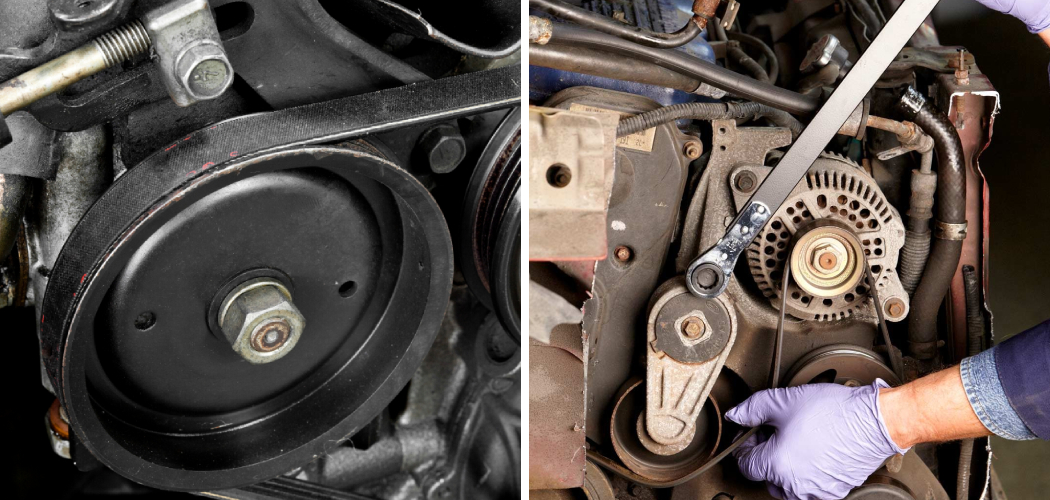The serpentine belt is a vital component in your vehicle, responsible for transmitting power from the engine’s crankshaft to various accessories such as the alternator, power steering pump, air conditioning compressor, and sometimes the water pump.

A slipping serpentine belt can lead to reduced accessory performance and unexpected breakdowns and could potentially cause severe engine damage. This guide provides comprehensive insights on how to stop a serpentine belt from slipping, ensuring that your engine runs smoothly without the inconvenience and hazard of belt-related issues.
Understanding Serpentine Belt Slipping
Symptoms of a Slipping Belt: When a serpentine belt begins to slip, it often betrays its condition with distinct auditory and visual signals that drivers should not ignore. The most common cue is a high-pitched squealing noise emanating from under the hood, particularly on startup or when accelerating.
This sound is caused by the belt’s inability to maintain grip on the pulleys. Additionally, you might notice dimming headlights or flickering dashboard lights, which indicate that the belt isn’t effectively turning the alternator at consistent speeds, leading to fluctuations in electrical power.
Causes of Belt Slippage: Several culprits can lead to a serpentine belt’s lack of tension and subsequent slippage. A worn-out belt, with visible signs of fraying or cracking, naturally loses its grip over time. Tensioner issues, including a weak or failing automatic tensioner, are also common, as they can no longer maintain the correct amount of pressure on the belt.
Misaligned or dirty pulleys can create uneven surfaces that diminish traction. Moreover, a glazed belt surface — smooth and shiny from excessive heat — or a belt contaminated with oil, coolant, or other engine fluids will slip more easily since these substances reduce friction.
Impact of Different Causes: Each cause of belt slippage negatively affects the belt’s grip and the engine’s performance in distinct ways. Worn belts may slip intermittently before failing completely, while tensioner problems result in a consistent lack of pressure that allows slippage. Pulley misalignment often leads to uneven belt wear, which compounds grip issues over time.
Glazing usually develops from overheating, which impairs the belt’s elasticity and traction. Contaminants on the belt, such as oils, on the other hand, create a slippery surface that compromises the integrity of the belt’s function. Addressing these issues promptly is crucial to maintaining engine performance and longevity.
Diagnosing the Problem
Visual Inspection
To diagnose a slipping serpentine belt, start with a thorough visual inspection. With the engine off and cooled down, open the hood and locate the serpentine belt. Look for signs of wear, such as cracks, fraying, or slick, glazed spots on the belt’s surface. Each of these indicates different stages of belt degradation.
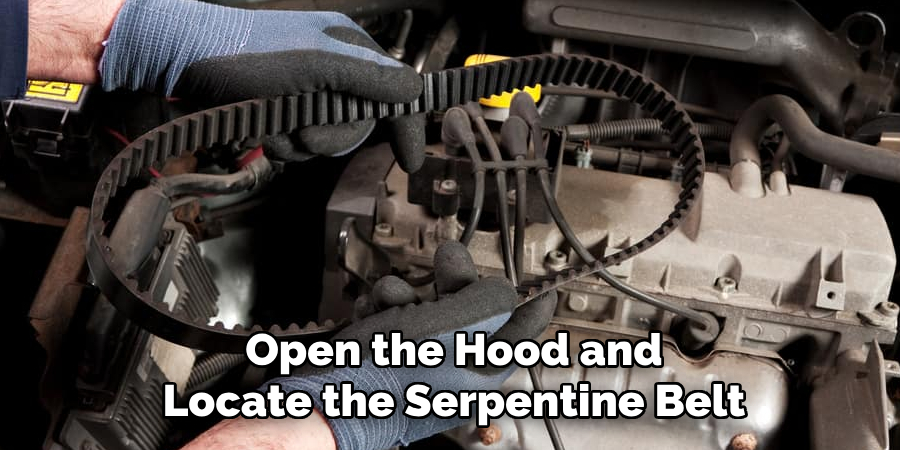
Also, inspect the belt’s path to ensure it is seated correctly on all the pulleys. Misalignment is a common issue and can be spotted by a belt that appears off-center or has slid partially off the pulleys. Check for pulley damage as well, such as nicks or worn edges, which can damage the belt.
Tensioner Check
Next, examine the belt tensioner by rotating it with a wrench (usually a long-handled ratchet or breaker bar). It should move smoothly and maintain tension on the belt. To check if the tensioner is weak, give the belt a push or pull—it should have a firm but limited give. If the belt is too taut or too loose, or if the tensioner arm jerks or sticks, these are signs of potential tensioner failure.
Using Diagnostic Tools
For those with technical expertise, specialized tools can aid in diagnosis. A belt tension gauge can measure if the belt has the correct tension.
Meanwhile, modern scanners and diagnostic tools can assess the accessory drive system’s health and often pinpoint issues with specific components. However, these tools can be complex, and incorrect use may lead to misdiagnosis. It’s important to consult a professional if you’re unsure about using these diagnostic tools.
Importance of Identifying the Root Cause
Identifying the exact cause of belt slippage is imperative for a successful repair. Each issue—whether it’s belt wear, tensioner failure, pulley misalignment, or contamination—requires a specific solution. Addressing the symptom without fixing the underlying cause will likely lead to repeated problems.
For instance, simply replacing a worn belt without addressing a misaligned pulley can result in premature belt failure. Taking the time to pinpoint the root cause will save you both time and money in the long run and help ensure your vehicle’s reliability.
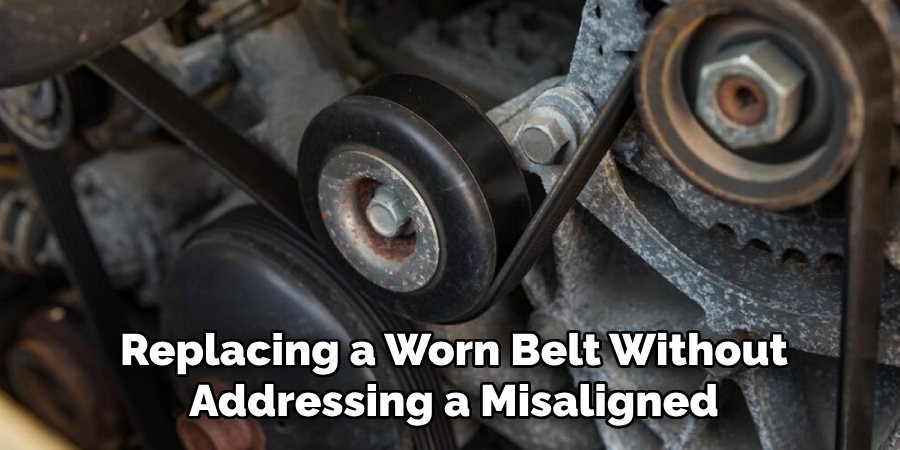
How to Stop a Serpentine Belt from Slipping: Safe and Effective Solutions
1. Replacing the Serpentine Belt
Safety Precautions
Safety should be your foremost concern before beginning any work on your car. Ensure the engine is turned off and has cooled down to avoid any burns or accidents caused by moving parts. Wear protective gloves and safety glasses to guard against any potential debris.
Step-by-Step Guide
- Locate and photograph: Locate your serpentine belt system and take a clear photograph for future reference in case you need to recall the configuration.
- Relieve tension: Find the belt tensioner and use a wrench or serpentine belt tool to relieve the tension from the belt. Some vehicles have a spring-loaded tensioner you can hold back, while others may require you to loosen a bolt.
- Remove the belt: With the tension released, slide the belt off the various pulleys and remove it from the engine bay.
- Compare and inspect: Get your new serpentine belt and compare it to the old one to confirm the size and number of ribs match. Check all pulleys to ensure they are clean and undamaged before installing the new belt.
- Route the belt: Following the diagram you snapped earlier or a diagram from your owner’s manual, route the new belt around the pulleys, leaving the tensioner for last.
- Apply tension: Re-tension the belt carefully, ensuring the belt is seated correctly in the pulley grooves and is taunt enough to avoid slipping.
Different car models might have variations in the process. For example, some European cars have a more complex routing, while others may have more accessible tensioner mechanisms. Always consult your vehicle’s service manual for specific instructions.
2. Adjusting the Tensioner
Tensioner Adjustment: If your belt requires tension adjustment and your car has a manual tensioner, turn the bolt on the tensioner clockwise to tighten or counterclockwise to loosen. However, many modern cars come with automatic belt tensioners that should not be manually adjusted.
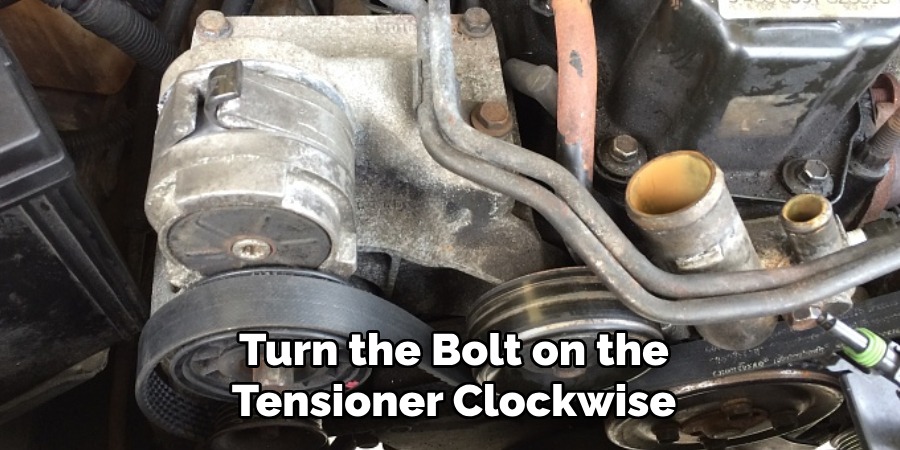
When to Seek Professional Assistance: If the belt still seems too loose or too tight after replacement, or if you’re unsure how to properly adjust the tension, it’s time to seek professional assistance, especially since inappropriate tension can lead to belt or engine damage.
3. Addressing Pulley Issues
Cleaning Pulleys: Clean any debris or buildup from the pulley grooves using a non-abrasive cleaner and a brush that can reach into the grooves.
Aligning Pulleys: Pulley alignment tools are available for measuring and adjusting pulley alignment. However, this task can be complex and may affect the engine’s operation if not done correctly.
Replacing Pulleys: If a pulley is damaged, it must be replaced. Loosen the mounting bolt(s) to remove the old pulley, then install the new one and retighten the bolt(s) according to the manufacturer’s specifications.
For any issues that go beyond simple cleaning, such as deep pulley grooves or misalignment, professional help is advised.
4. Cleaning and Deglazing Belts
If your belt is slipping due to minor contamination or glazing, a belt dressing may be applied to help it grip. Contrary to some beliefs, cleaning or deglazing serpentine belts is usually not recommended, as this can damage the belt’s structure. If contamination is a recurring problem, find and fix the source to avoid repeat incidents.
5. Addressing Oil Leaks
Oil leaks represent a serious issue for serpentine belts. If you find oil on your belt, locate the source of the leak and repair it immediately. Common sources include valve cover gaskets and front crankshaft seals. A clean belt ensures optimal performance and longevity. If unsure about dealing with oil leaks, seeing a mechanic should be the next step to prevent more serious issues.
Concluding Remarks
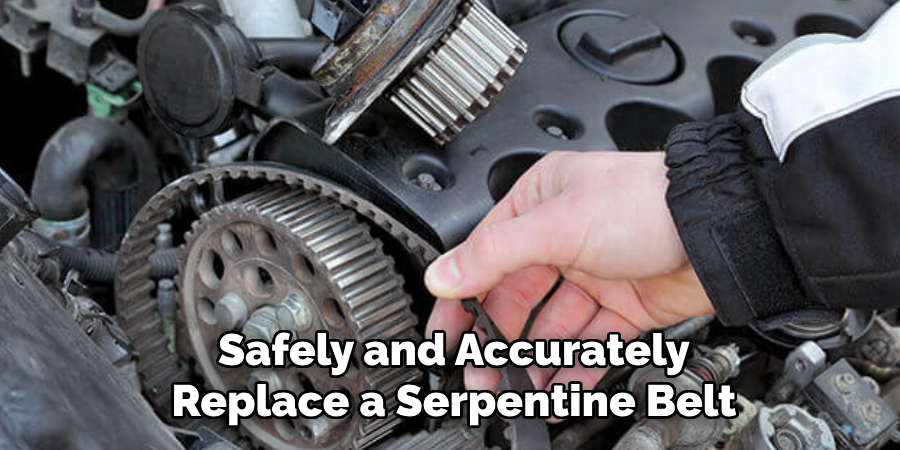
Taking the time to safely and accurately replace a serpentine belt, adjust the tensioner, address pulley issues, and deal with contamination can extend the life of your serpentine belt and ensure that your car remains reliable. Never hesitate to consult the vehicle’s service manual or seek professional help when dealing with complicated repairs. Your safety and your vehicle’s health are paramount.
Professional Help and Warranty Considerations
When tackling automotive repairs, being well-informed about your vehicle’s warranty and understanding when to seek professional help can prevent unnecessary complications and expenses. Here are some important considerations:
When to Seek Professional Assistance
Car repairs can range from simple, do-it-yourself fixes to complex issues that demand expert attention. It’s vital to seek professional assistance in the following situations:
- Complex Repairs: If the repair process involves disassembling engine components or requires special tools and knowledge, it’s safer and more efficient to let a trained technician handle the task.
- Diagnosing Intricate Issues: Understanding the root cause of a problem can be difficult. Mechanics possess the diagnostic equipment and expertise to accurately identify and resolve complicated issues.
- Avoiding Warranty Voiding Actions: DIY repairs on specific vehicle systems can void warranties. Always check your warranty terms before proceeding with any repair that you’re not completely confident about handling.
Warranty Coverage
Many vehicles come with warranties that might cover the cost of belt replacements or repairs. It’s essential to know that warranty coverage is subject to limitations and exclusions, such as:
- Wear and Tear: Regular maintenance items, like serpentine belts, often fall under ‘wear and tear’ and may not be covered after a certain mileage or time period.
- Improper Maintenance: Failing to adhere to the maintenance schedule specified by the manufacturer can result in denied warranty claims.
- Use of Non-Approved Parts: Warranties may require using OEM (Original Equipment Manufacturer) parts for repairs. Ensure compatibility to avoid voiding your warranty.
Finding a Qualified Mechanic
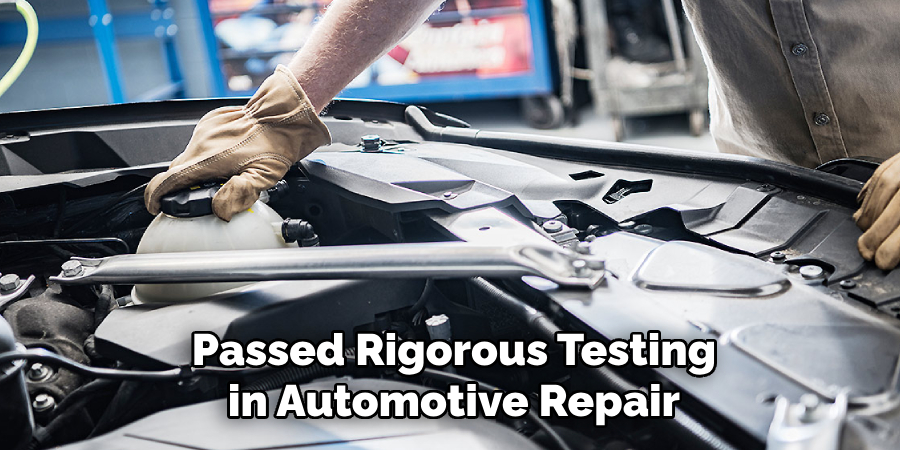
To find a reputable and qualified mechanic, consider the following tips:
- Certifications: Look for mechanics who are ASE (Automotive Service Excellence) certified, indicating they’ve passed rigorous testing in automotive repair.
- Recommendations: Ask friends, family, or co-workers for referrals. Personal experiences can be a dependable guide.
- Reviews and Ratings: Research local shops online, checking reviews and ratings on various platforms.
- Specialization: Some mechanics specialize in certain vehicle makes or types. A specialist might provide more experienced service for your particular car model.
Taking the right precautions and seeking professional help when necessary will ensure your vehicle’s safety, reliability, and longevity.
That’s it! You’ve now learned how to stop a serpentine belt from slipping and address various related issues. Regular maintenance and prompt repairs are essential for keeping your vehicle running smoothly, safely, and efficiently. So, be proactive in addressing any serpentine belt concerns and enjoy a smooth ride!
Preventive Maintenance and Avoiding Future Problems
The key to maximizing the life of your serpentine belt and preventing breakdowns lies in proactive and preventive maintenance. Regular attention to the condition of the belt and its related components can save both time and expense in the long run.
Regular Inspections
Regular visual inspections play a pivotal role in maintaining the serpentine belt system’s health. You can preempt failures by frequently checking the belt for signs of wear, such as cracks, fraying, or glazing.
These checks also include inspecting pulleys for alignment issues or debris buildup that can damage the belt. Establishing a routine for visual assessment—perhaps during oil changes or other scheduled services—provides peace of mind and ensures early detection of potential issues.
Scheduled Maintenance
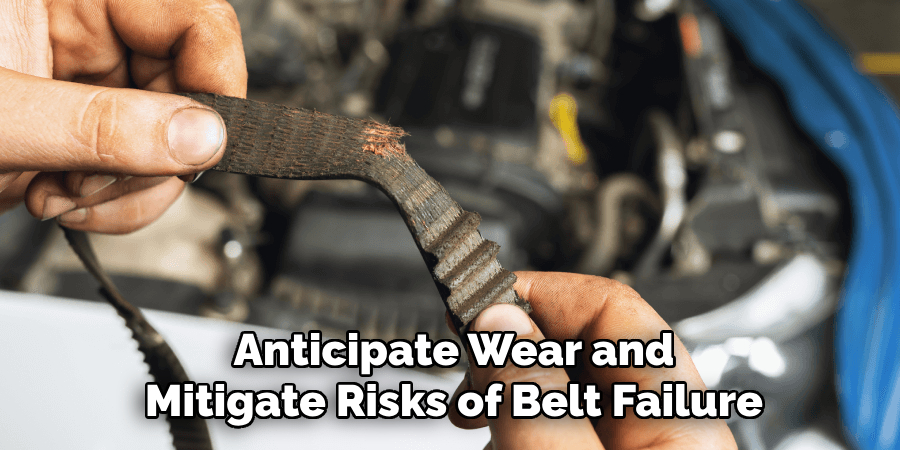
Adhering to manufacturer-recommended maintenance schedules is vital for the longevity and proper functioning of your vehicle’s serpentine belt. Typically, automakers will specify intervals for belt inspection and replacement within the vehicle’s service manual.
These specifications are designed to anticipate wear and mitigate risks of belt failure before they can cause further damage or render the vehicle inoperative. Keep a log of maintenance activities and ensure that belt checks are a part of your vehicle’s regular servicing.
Quality Replacements
When replacement becomes necessary, opt for high-quality serpentine belts from reputable manufacturers. High-caliber belts tend to offer superior materials that provide better durability, heat resistance, and performance, and they are less prone to premature wear or failure. Skimping on quality for a lower price can lead to more frequent replacements and, potentially, more serious engine problems if the belt fails while driving.
Addressing Underlying Issues
A recurrent problem with the serpentine belt system often points to an underlying issue. Whether it’s a persistent oil leak that degrades the belt material or a tensioner that isn’t functioning correctly, these root causes must be addressed to avoid repeated problems.
Failure to remedy these fundamental issues can result in continual belt slippage, reduced accessory performance, and engine damage. Proper diagnosis and repair of these conditions will prevent the serpentine belt from subsequent failure and ensure the system operates as intended.
In summary, the longevity and consistent performance of your serpentine belt hinge on a regimen of regular inspections, adherence to maintenance schedules, installation of quality replacement parts, and addressing any underlying mechanical problems. These practices are not just about prevention; they are investments in the ongoing reliability and safety of your vehicle.
Frequently Asked Questions
How Often Should I Replace My Serpentine Belt?
Typically, it’s recommended to replace your serpentine belt every 60,000 to 100,000 miles. However, always consult your owner’s manual or ask a professional mechanic for advice based on your specific vehicle model and belt condition.
Can I Drive with A Cracked Serpentine Belt?
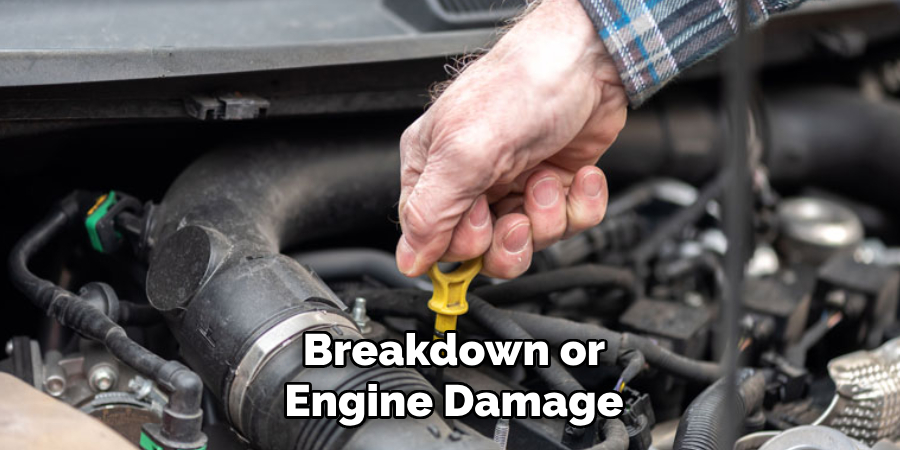
Driving with a cracked serpentine belt is not advisable as it could break at any time, leading to a breakdown or engine damage. It’s best to replace a damaged belt as soon as possible.
What Are the Symptoms of A Failing Serpentine Belt?
Common signs of a failing serpentine belt include squealing noises from the engine bay, power steering, and air conditioning malfunctions, overheating, and visible wear or damage on the belt.
Can a Serpentine Belt Affect the Vehicle’s Battery?
Yes. If the serpentine belt is slipping or has snapped, it won’t be driving the alternator properly, which can lead to the battery not charging and eventually losing power.
Are Serpentine Belts Covered Under Engine Warranties?
Coverage for serpentine belts under engine warranties varies, as belts are often considered a wear-and-tear item. Check your warranty details to see if belt replacements are included.
Conclusion
In conclusion, learning how to stop a serpentine belt from slipping is essential for vehicle maintenance. The key takeaways include the importance of identifying early signs of belt wear, understanding how to diagnose issues accurately, and taking appropriate measures to rectify them. Utilizing professional assistance for complex repairs protects against warranty voiding and ensures safety.
Preventive maintenance, including regular inspections and adherence to service schedules, along with using high-quality replacements and addressing any underlying mechanical problems, is crucial. Responsible car care is imperative for a smooth and safe driving experience, keeping your vehicle running efficiently for years to come.

